Ladies and gentlemen, I give you . . . the brick:
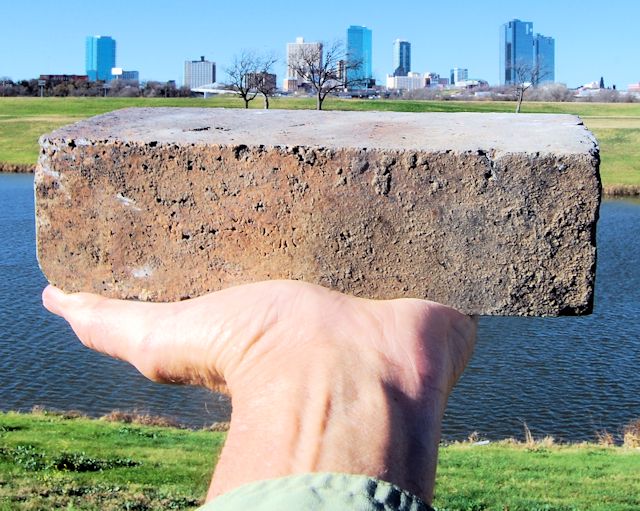
Not much to look at, is it? A five-pound block of clay, sand, and lime. Ah, but if you clone that block by the thousands, mix up a big batch of mortar, and stir in some artistry by an architect and some skill by masons, then you get details of buildings such as these (all at least ninety years old):
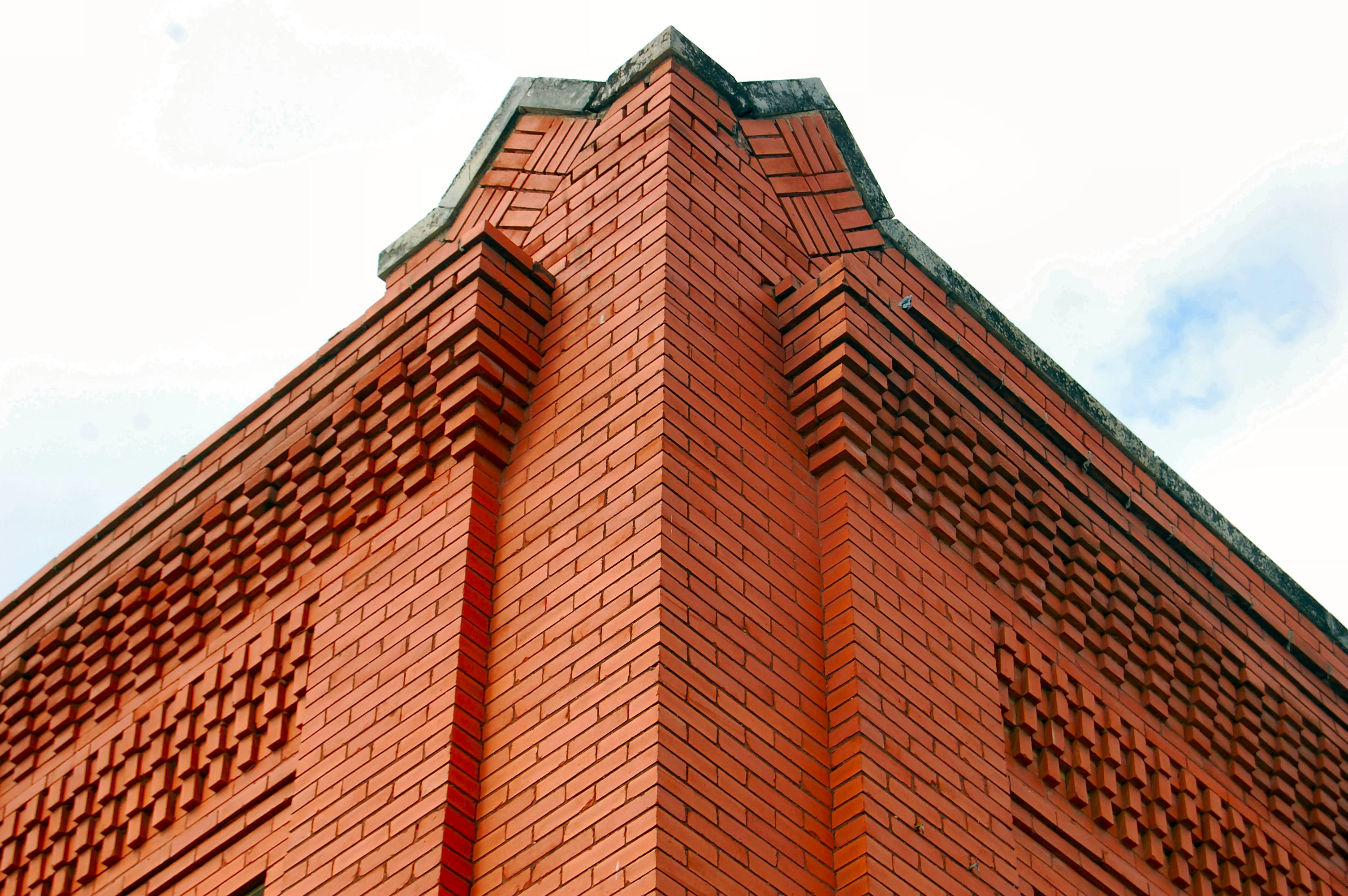 On West Exchange Avenue this building (1909) with wonderful corbelling of the cornice originally was the stockyards branch post office.
On West Exchange Avenue this building (1909) with wonderful corbelling of the cornice originally was the stockyards branch post office.
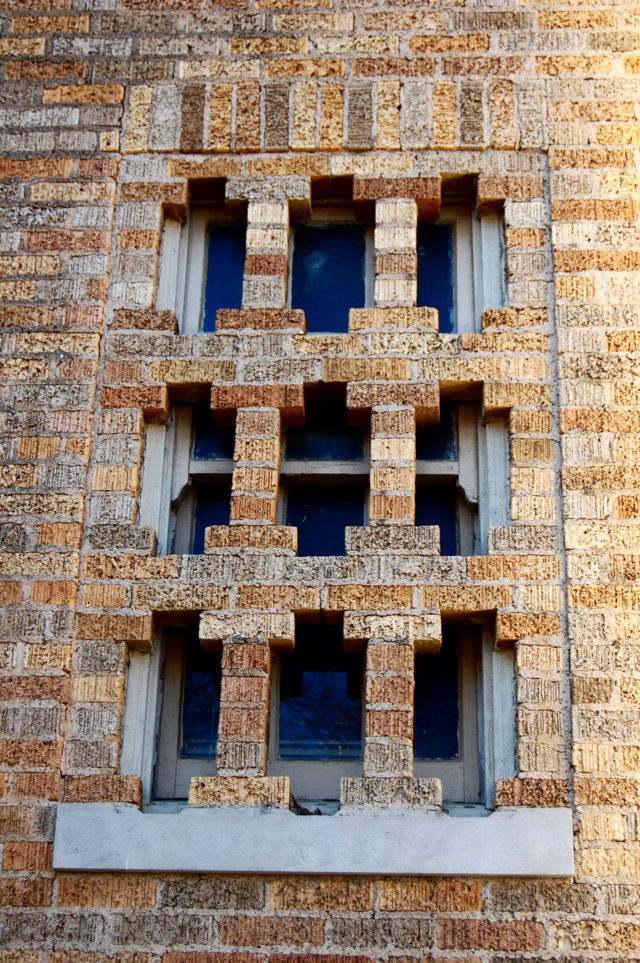
On Samuels Avenue the grille of a window of Nash Elementary School (1927, Clarkson), named for Charles Nash.
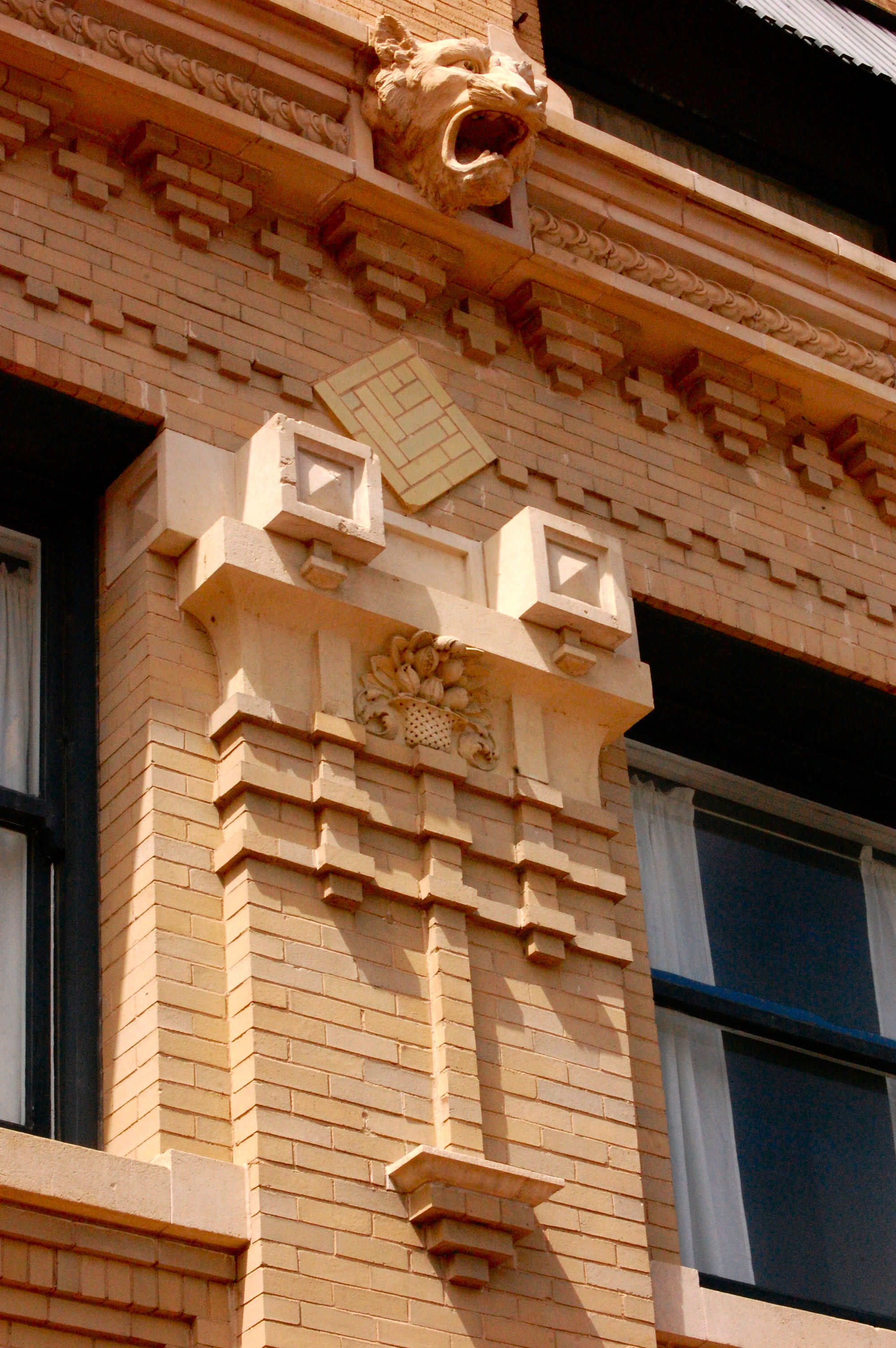 Flatiron Building (1907, Sanguinet and Staats), built by Dr. Bacon Saunders, dean of the medical school of Fort Worth University, on Houston Street.
Flatiron Building (1907, Sanguinet and Staats), built by Dr. Bacon Saunders, dean of the medical school of Fort Worth University, on Houston Street.
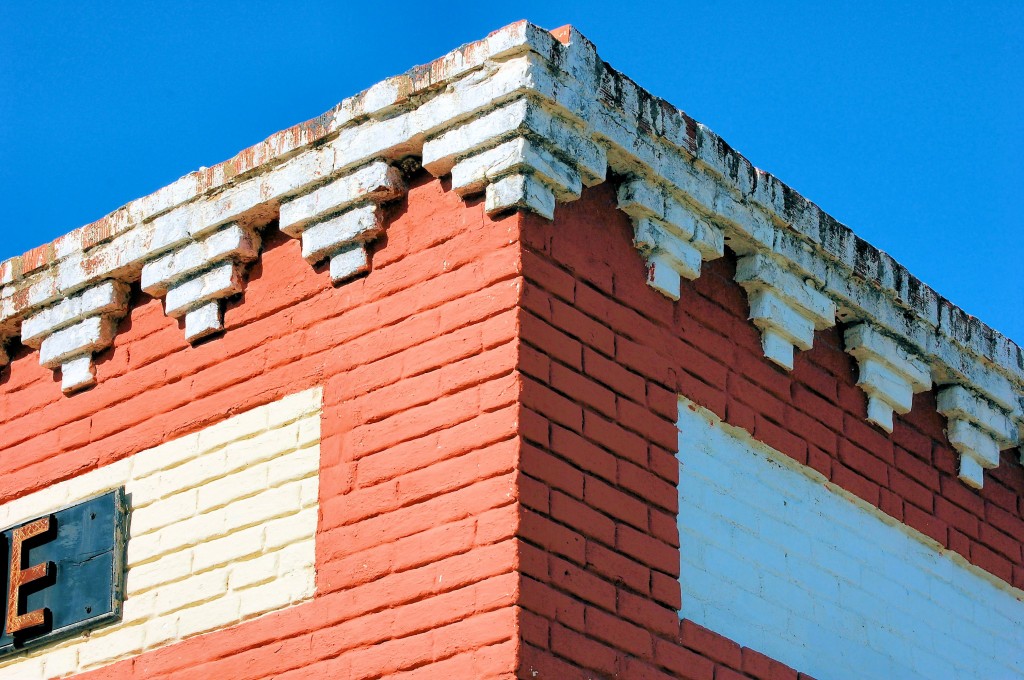 A corner of the Arts Fifth Avenue building (1920) at the corner of 5th Avenue and Allen Avenue in Fairmount.
A corner of the Arts Fifth Avenue building (1920) at the corner of 5th Avenue and Allen Avenue in Fairmount.
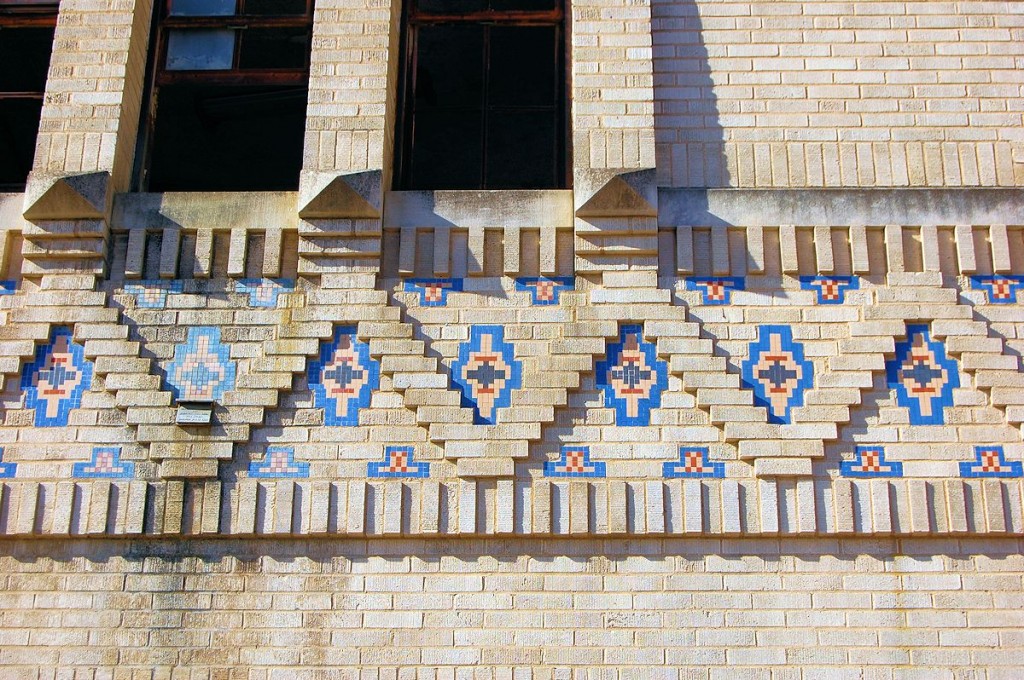 The Texas & Pacific freight depot (1931, Hedrick) on Lancaster Avenue.
The Texas & Pacific freight depot (1931, Hedrick) on Lancaster Avenue.
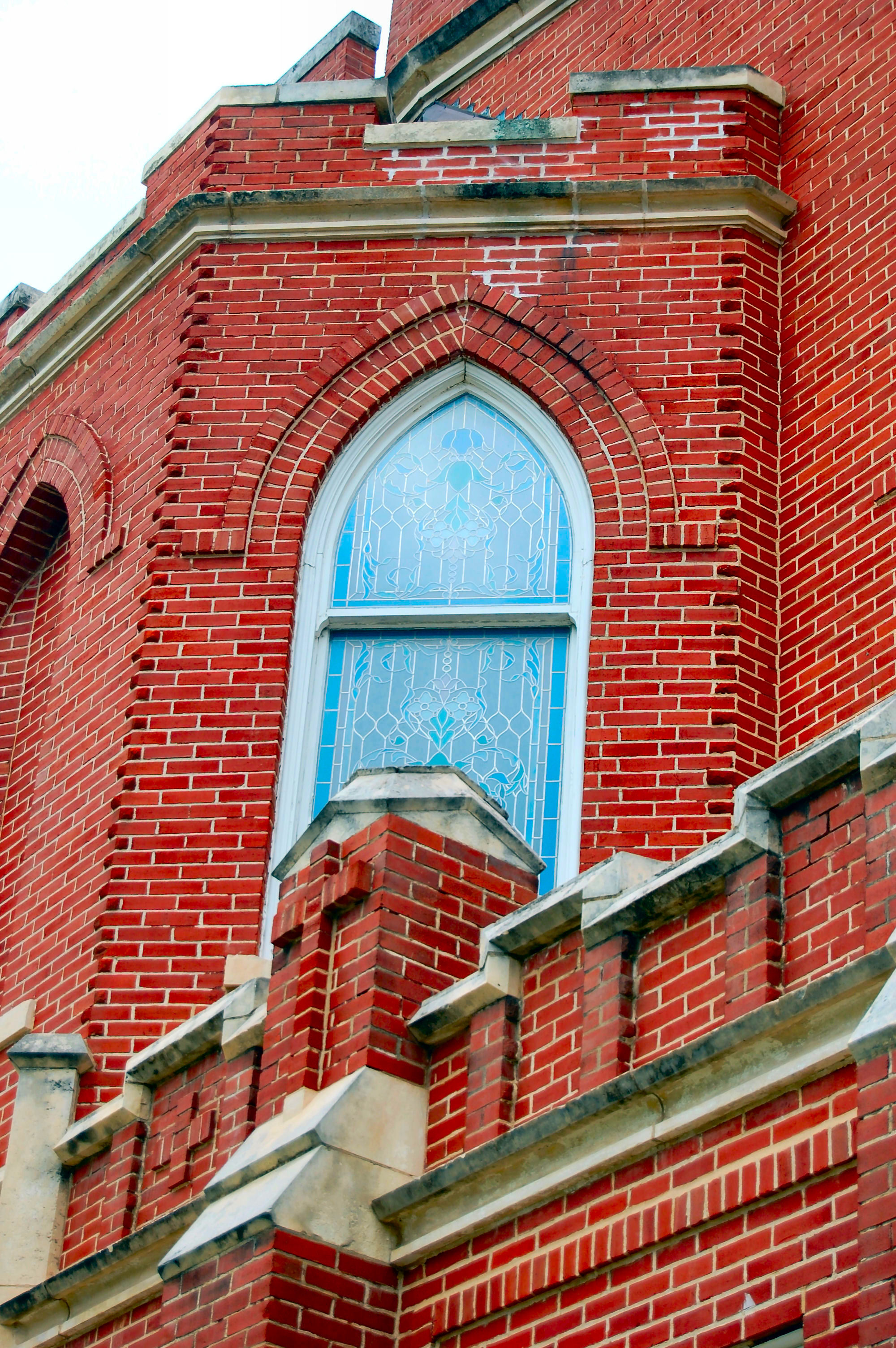 Our Lady of Victory (1910, Sanguinet and Staats) on Hemphill Street.
Our Lady of Victory (1910, Sanguinet and Staats) on Hemphill Street.
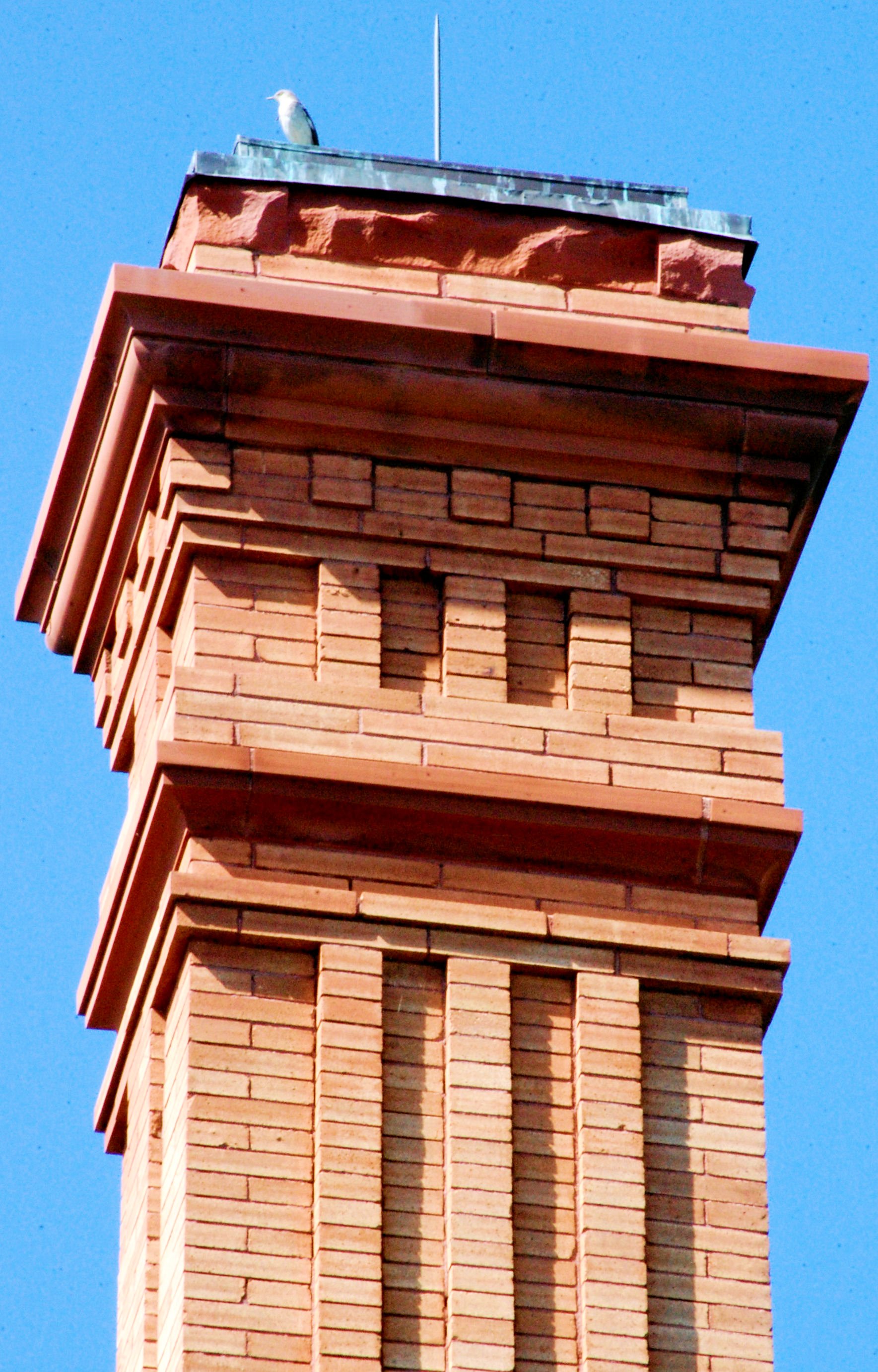 Chimney of the Ball-Eddleman-McFarland House (1899, Messer) on Quality Hill’s Penn Street.
Chimney of the Ball-Eddleman-McFarland House (1899, Messer) on Quality Hill’s Penn Street.
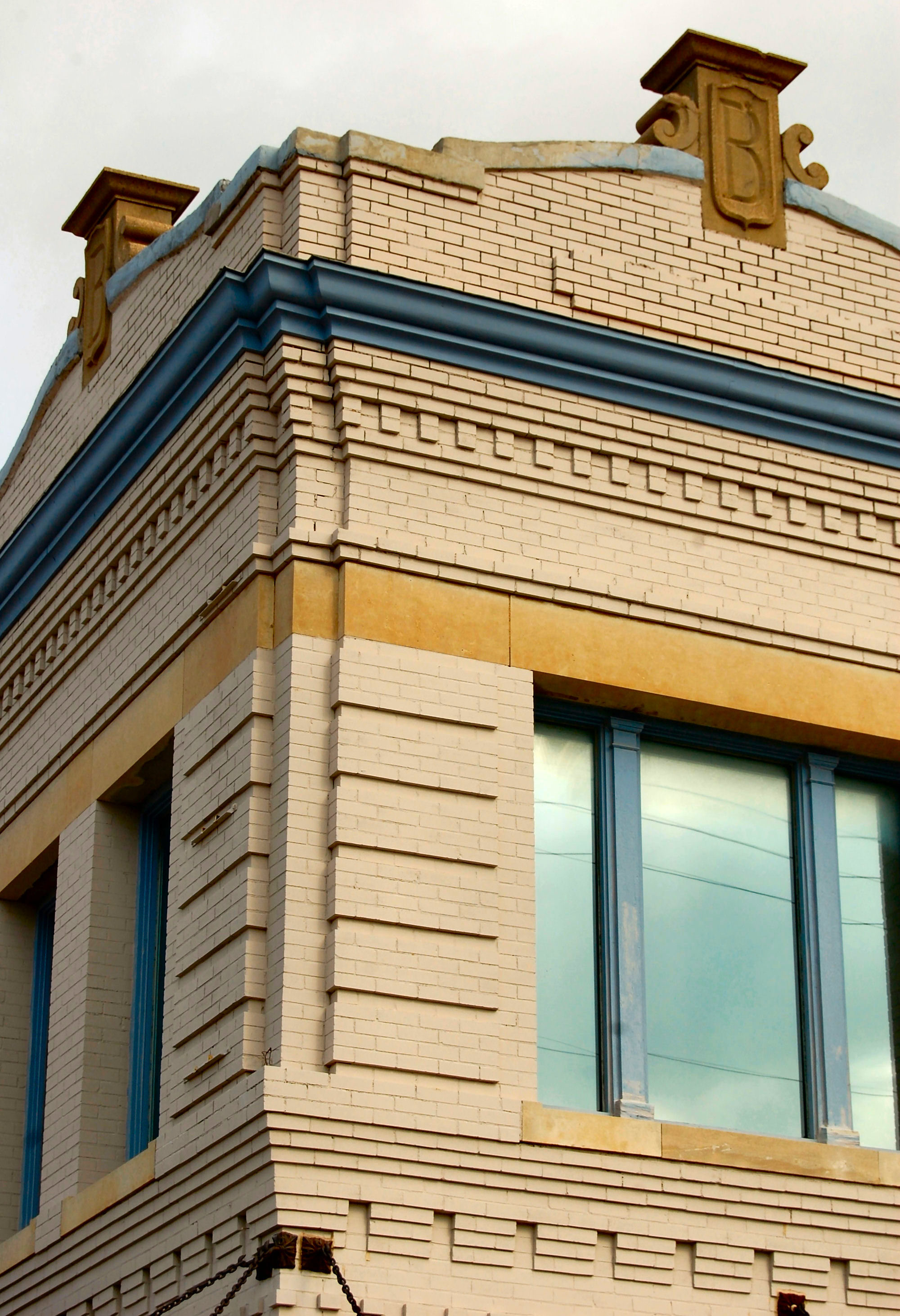 Commercial building (1909) of pasta pioneer Louis Bicocchi on Jennings Avenue.
Commercial building (1909) of pasta pioneer Louis Bicocchi on Jennings Avenue.
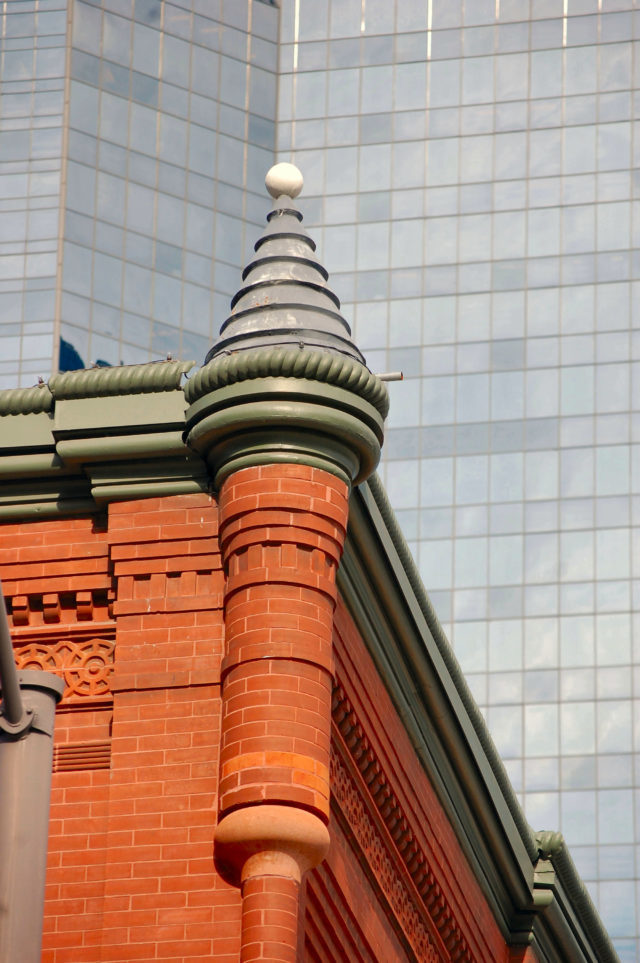 Land Title Block Building (1889, Haggart and Sanguinet) on East 4th Street.
Land Title Block Building (1889, Haggart and Sanguinet) on East 4th Street.
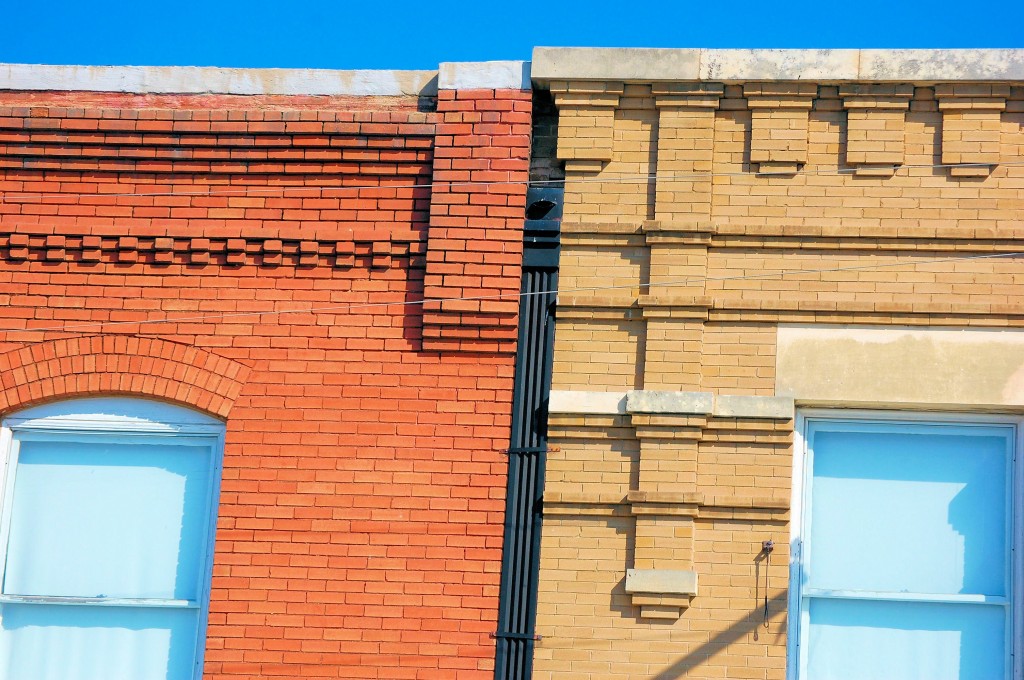 On South Main Street the junction of the Sawyer and Joslin buildings (1905, 1910).
On South Main Street the junction of the Sawyer and Joslin buildings (1905, 1910).
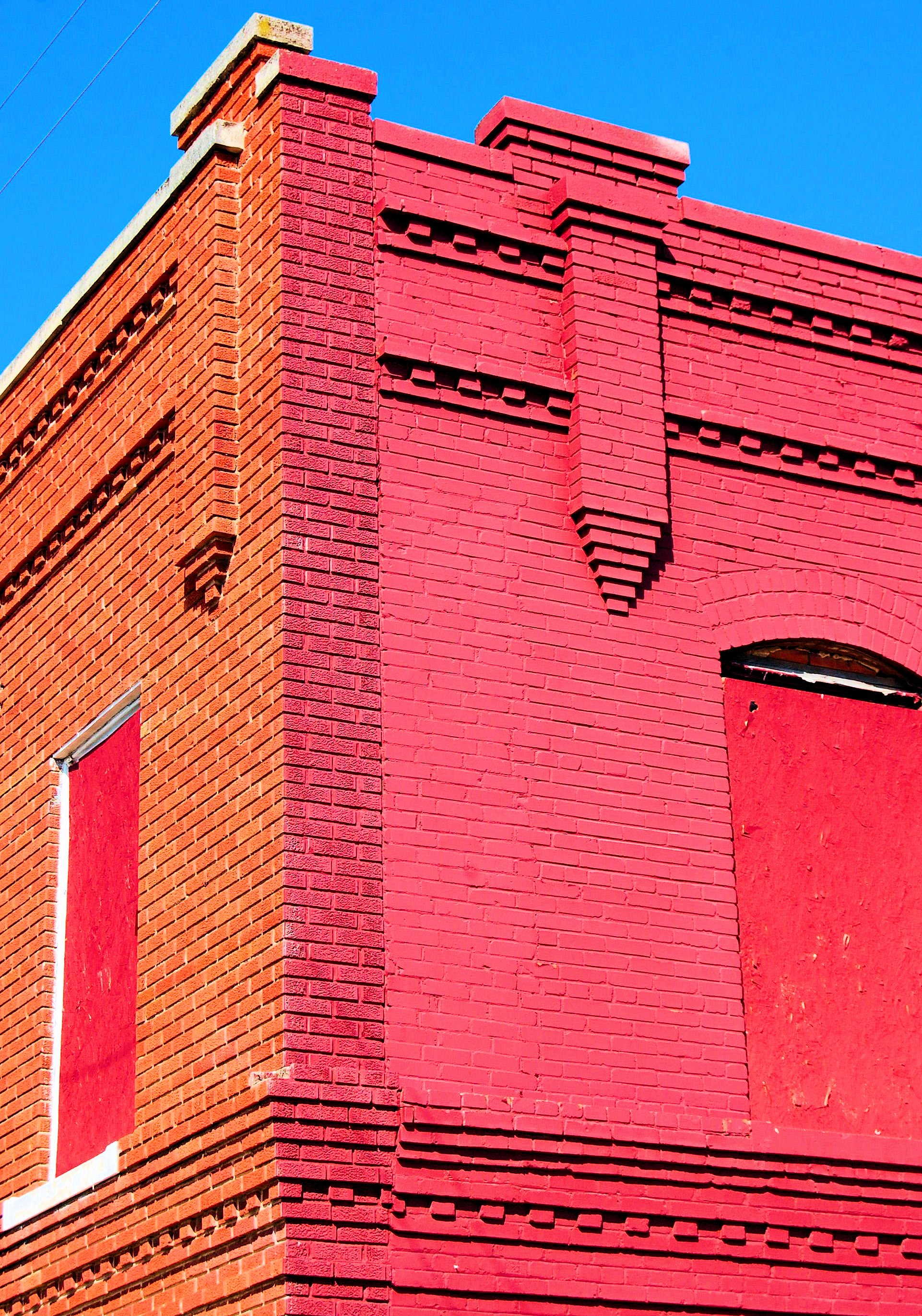
Home of Eagle Steam Bakery (1895) on South Main Street.
 Binyon-O’Keefe Storage (1916, Sanguinet and Staats) on Calhoun Street.
Binyon-O’Keefe Storage (1916, Sanguinet and Staats) on Calhoun Street.
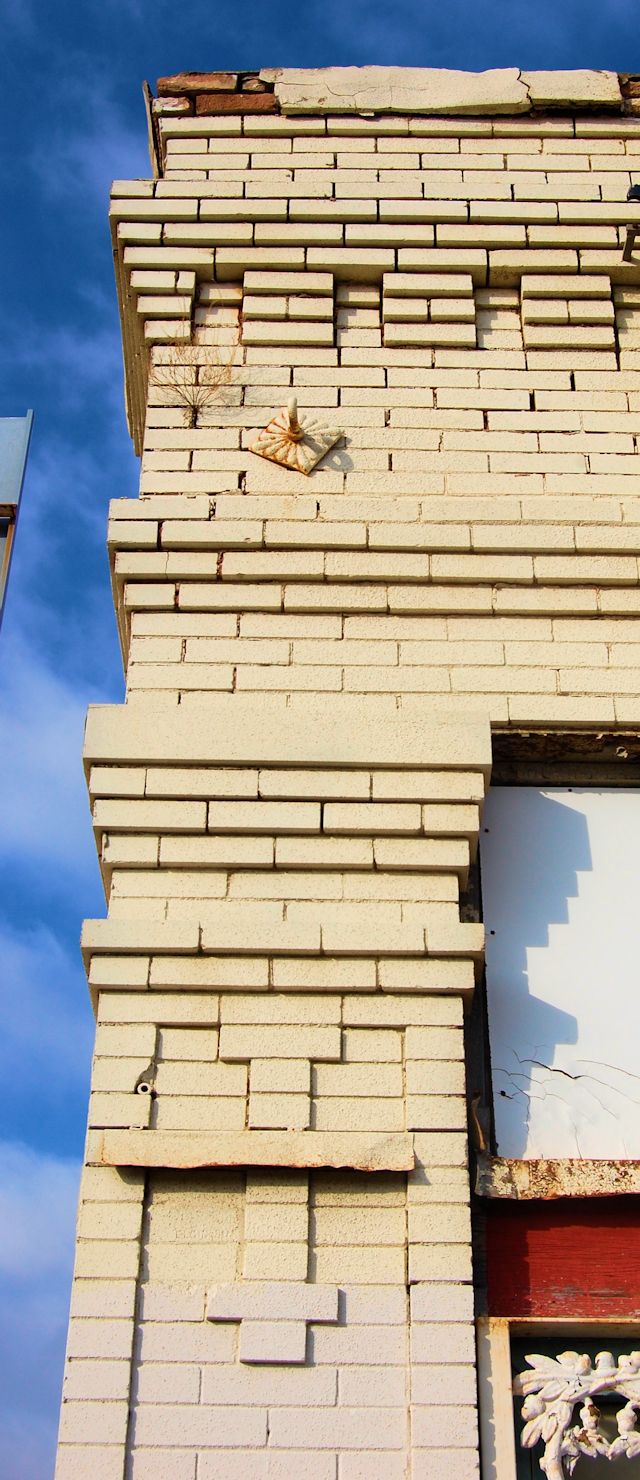 The building at 526 Jennings Avenue was built in 1913 as the neighborhood grocery store of John E. Wolfe. The building housed a grocery store until 1937. In the 1960s the Dunnagan family moved its iron works into the building.
The building at 526 Jennings Avenue was built in 1913 as the neighborhood grocery store of John E. Wolfe. The building housed a grocery store until 1937. In the 1960s the Dunnagan family moved its iron works into the building.
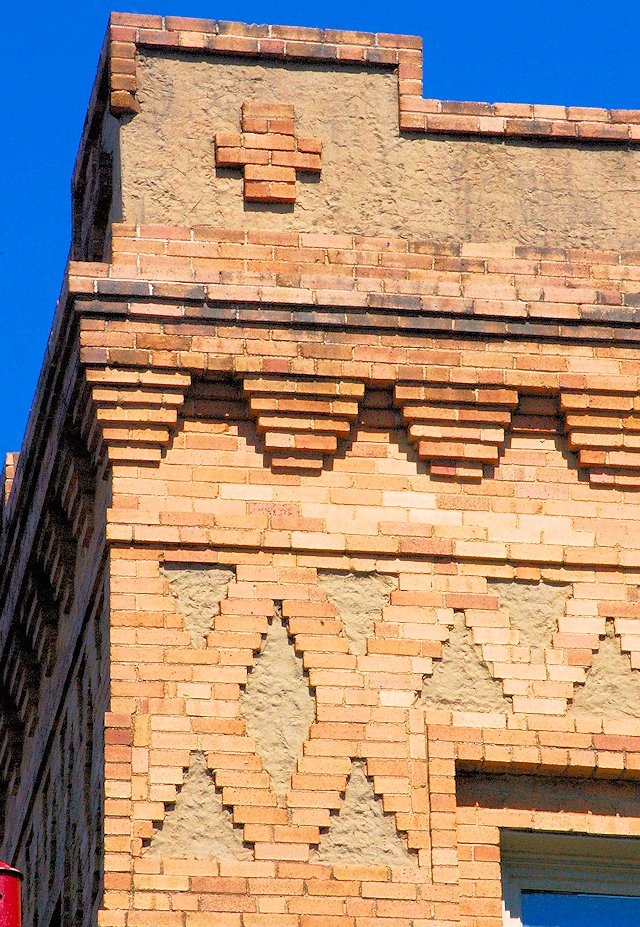 Thannisch Building (1907) on East Exchange Avenue.
Thannisch Building (1907) on East Exchange Avenue.
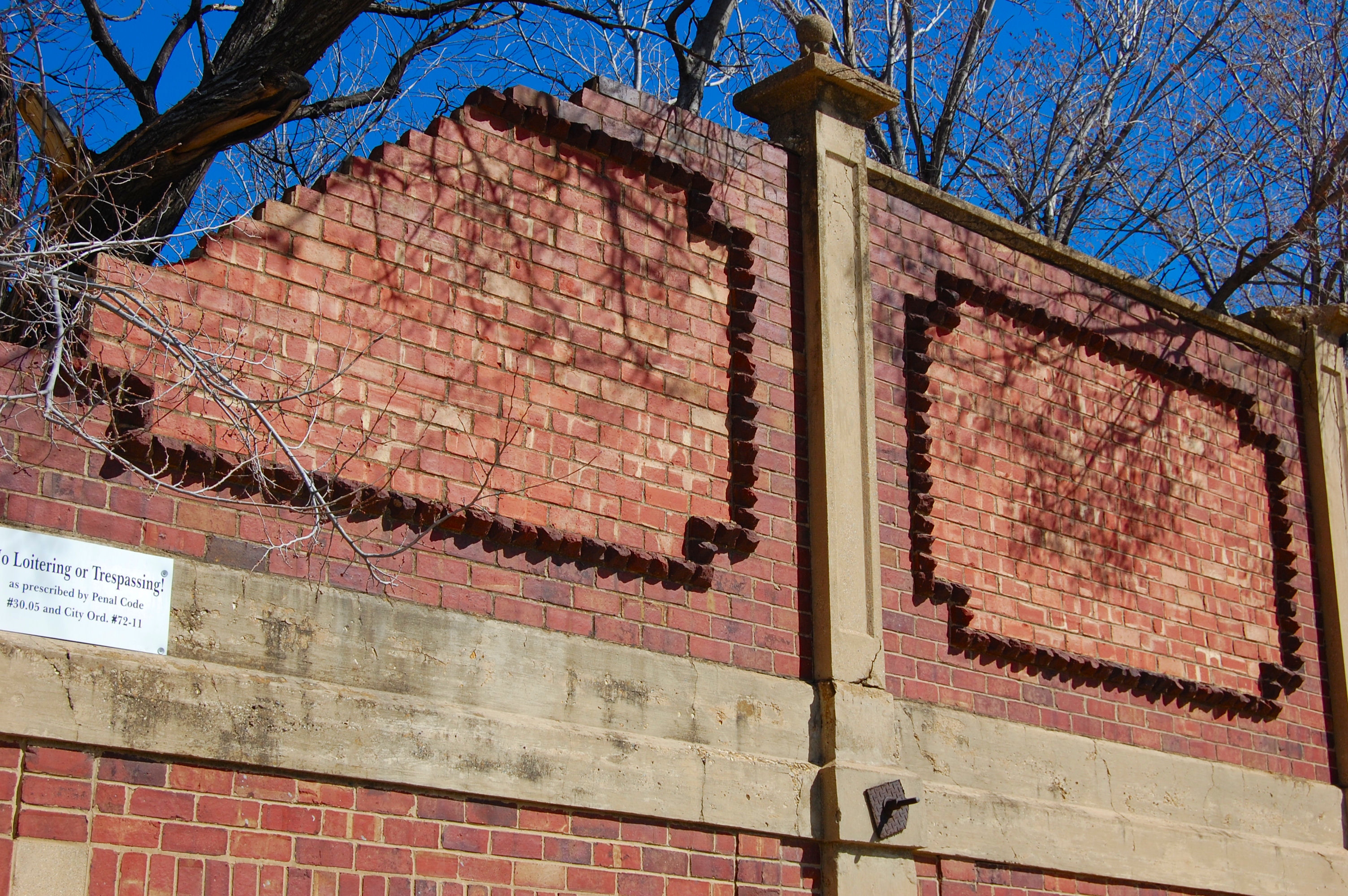 Wall of the Swift packing plant (1902) on Northeast 23rd Street. The darker bricks are bricks whose ends were chiseled into points.
Wall of the Swift packing plant (1902) on Northeast 23rd Street. The darker bricks are bricks whose ends were chiseled into points.
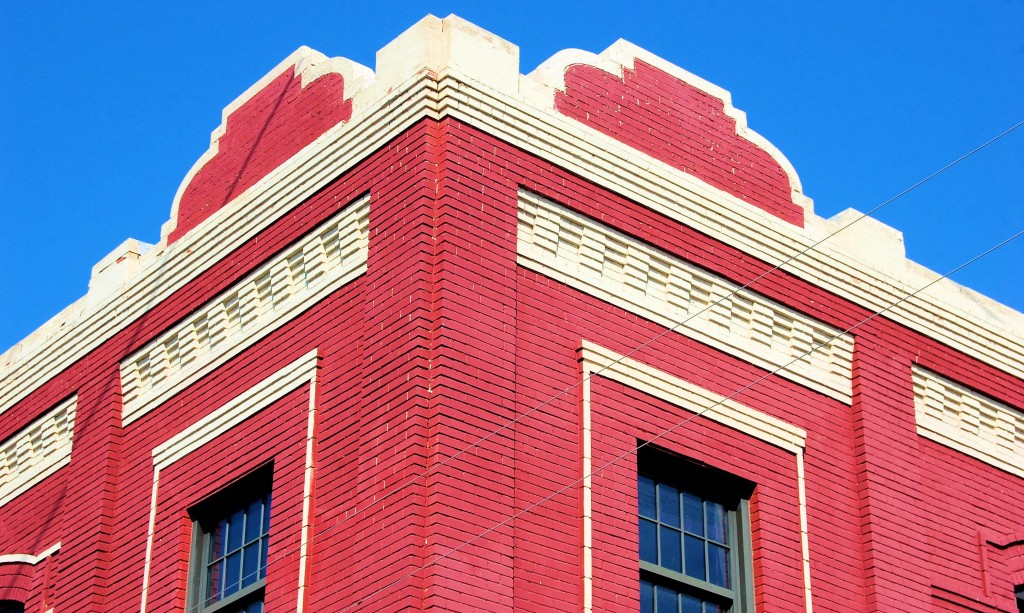 Commercial building (1906) at 219 South Main Street, now occupied by the Frank Kent company.
Commercial building (1906) at 219 South Main Street, now occupied by the Frank Kent company.
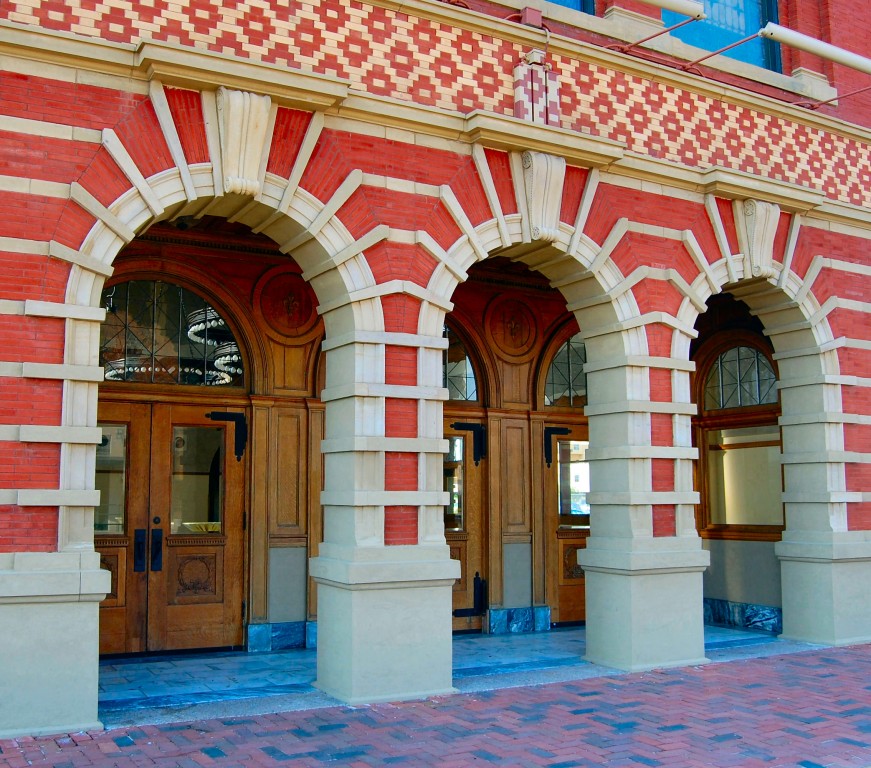 The old Santa Fe Union Depot (1900) on Jones Street.
The old Santa Fe Union Depot (1900) on Jones Street.
 The bricks on East Exchange Avenue in front of the building that housed the offices of the Swift packing plant are laid in a herringbone pattern.
The bricks on East Exchange Avenue in front of the building that housed the offices of the Swift packing plant are laid in a herringbone pattern.
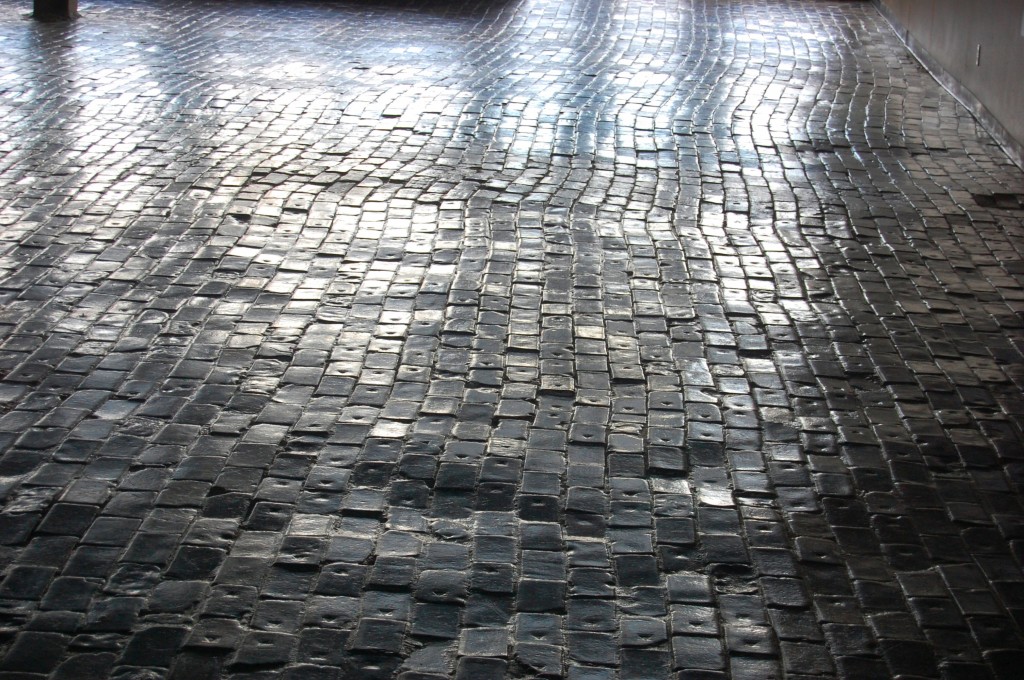 No overly artistic but notable for their history and for their sheer numbers—millions of brick—many of them made in Thurber—pave the stockyards.
No overly artistic but notable for their history and for their sheer numbers—millions of brick—many of them made in Thurber—pave the stockyards.

And naturally there is fine brickwork on the monument (1922) in the bricklayers union plot at Oakwood Cemetery.
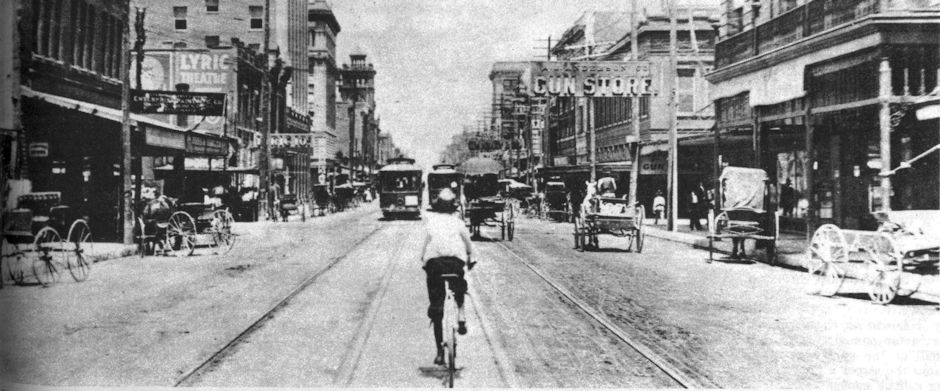





All of these are beautiful, but some are astonishing. On Land Title, how was that curved brick manufactured?
Sharon, custom curved brick molds would be my guess.
And when we were very small children, every street downtown, and virtually every major thoroughfare in the city- was paved with red brick. (When you’re a tiny child, you’re pretty close to the ground- so many memories are likely to be formed at that altitude.)
I still take note of bricked streets when I come across them, which is less and less often. The post has a link to a two-parter on bricked streets (Follow the Red Brick Roads).
Brick artwork such as this says to me: STABILITY
Something those glass towers don’t say! Thanks again for some great and thought provoking work!
Thanks, Jo Ann. I’ll post a couple more homages to the humble brick in the new year.